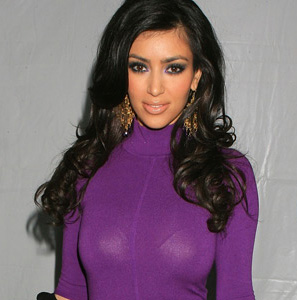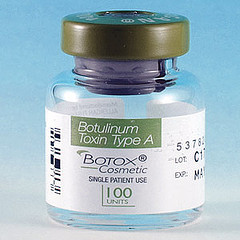-
Fact Sheet: Botox Side Effects
Tuesday, April 15th, 2025by Dr. Barbara Hopkins
It seems like everybody is talking about Botox for removing wrinkles and helping you to look younger. Even Hollywood celebrities like Kim Kardashian and Nicole Kidman are rumored to have tried Botox.
But is Botox safe? Are there any side effects to worry about? Before you start Botox treatments, it’s important to learn all you can about this new cosmetic treatment, including any potential risks.
 Side effects that can occur with Botox for cosmetic use (to improve the appearance of facial wrinkles) include droopy eyelids, muscle weakness, facial pain and nausea. Patients may also experience flu-like symptoms and pain at the Botox injection sites.
Side effects that can occur with Botox for cosmetic use (to improve the appearance of facial wrinkles) include droopy eyelids, muscle weakness, facial pain and nausea. Patients may also experience flu-like symptoms and pain at the Botox injection sites.Botox and Droopy Eyelids
If Botox is injected too close to the eyebrows, droopy eyelids can occur. The risk of this side effect can be minimized by visiting an experienced Botox injector who understands human facial anatomy. Fortunately, the vast majority of droopy eyelids return to normal over time, with no lasting effects.
The majority of Botox side effects happen when Botox spreads to other areas of the face or body that you don’t want to treat. Therefore, the best way to decrease the chance of side effects with Botox is to choose a physician with training in facial anatomy and Botox use.
Botox Injections: A Closer Look
When Botox – botulinum toxin type A – is injected into the muscles of the face, those muscles cannot contract for a period of time. They are essentially paralyzed. As a result, the wrinkles in that area (for example, “crows feet”) temporarily go away.
 As with any type of injection, the most common side effects are bruising and inflammation. These side effects can be mitigated by avoidance of Vitamin E, alcohol, ibuprofen, aspirin and St. Johns Wort for one week prior to treatment with Botox. Most importantly, try to choose an experienced dermatologist or facial plastic surgeon to do the injecting.
As with any type of injection, the most common side effects are bruising and inflammation. These side effects can be mitigated by avoidance of Vitamin E, alcohol, ibuprofen, aspirin and St. Johns Wort for one week prior to treatment with Botox. Most importantly, try to choose an experienced dermatologist or facial plastic surgeon to do the injecting.By far the biggest problem with Botox is inexperienced injectors who don’t have a complete understanding of facial anatomy and thus inject all their patients the same way.
Each patient’s wrinkles, facial expressions and muscles must be evaluated on a case-by-case basis. Botox should then be injected to smooth wrinkles based on each person’s unique facial anatomy and muscle structure. And keep in mind, “less is often more” when it comes to Botox. Don’t overdo it.
In summary, Botox success stories require an experienced doctor with good technique who can treat each person individually. The cost of Botox may be more with a top doctor, but it’s worth it to get a satisfactory result.
Are There Long-Term Botox Side Effects?
More serious side effects sometimes occurring with Botox injections can include dysphagia (difficulty in swallowing), upper respiratory-tract infections, headache, neck pain, and nausea. These side effects normally disappear over a period of several weeks.
There are several things patients should avoid after having Botox. These include not rubbing the treated area for 24 hours, avoiding facials or dermabrasion for a few days, and not taking Vitamin E, aspirin or fish oil supplements for one week after the treatment.
Possible Allergic Reactions to Botox
If you experience any severe allergic reactions to Botox such as hives, rash, itching, tightness in the chest or trouble breathing, swelling of the mouth, face, lips, or tongue, you should seek medical attention at once. The same goes for difficulty swallowing or breathing, blurred or double vision, loss of muscle strength, irregular heartbeat, shortness of breath or severe headache.
Monitor your condition after having Botox and make sure that you call a doctor immediately should you notice anything out of the ordinary. While such strong allergic reactions are highly unlikely, they do happen in rare cases. Make certain that you discuss in detail all of the potential risks and side effects of Botox before beginning your treatments.
Are There Alternatives to Botox?
While Botox works by “freezing” the movement of facial muscles, dermal fillers like Restylane and Perlane work by adding “volume” to the skin. Dermal fillers and Botox should be seen as complementary, rather than as substitutes for one another.
A new wrinkle cream called Natox has been receiving a lot of attention recently. Natox claims to be a completely natural anti-wrinkle cream, made from pure organic ingredients.
Nip and Fab Frown Fix is another “Botox alternative” that is receiving notice. Many women in the United Kingdom swear by the results they are getting from Frown Fix.
“Face Yoga” for Reducing Wrinkles
Facial yoga is intended to be a natural and non-invasive alternative to the Botox, dermal fillers and other forms of plastic surgery. Its proponents claim that these facial exercises can help keep keep the face looking younger by slowing down or even reversing the aging process.
Yoga for the face is thought to promote collagen production, as it stimulates facial muscles and helps to improve one’s overall appearance. Facial yoga was developed by Annelise Hagen, who also has written a book on what she calls “the ultimate facelift.”
(published March 17, 2011)


